What is SEO?
Search Engine Optimization (SEO) is the practice of enhancing a website’s visibility and ranking on search engines like Google, Bing, and Yahoo. SEO involves various techniques to improve a website’s organic (non-paid) search results, aiming to increase traffic, improve user experience, and ultimately drive conversions. A successful SEO strategy focuses on both on-page and off-page factors, optimizing the technical foundation of a website, and developing high-quality content that meets users’ needs.
Key Components of SEO
1. Keyword Research
Keyword research is the foundation of any SEO strategy. It involves identifying the words and phrases potential customers use when searching for products or services. Effective keyword research focuses on finding:
- High search volume: Keywords with a significant number of searches each month.
- Low competition: Keywords that are easier to rank for due to lower competition.
- Long-tail keywords: More specific, longer phrases that have lower search volume but higher conversion rates.
Tools like Google Keyword Planner, Ahrefs, and SEMrush are commonly used for keyword research to find the best opportunities.
2. On-Page SEO
On-page SEO involves optimizing individual web pages to rank higher and earn more relevant traffic. Key elements of on-page SEO include:
- Title Tags: This is the main headline that appears in search engine results and should include the primary keyword.
- Meta Descriptions: A short description below the title tag that summarizes the content of the page and encourages users to click through.
- Headers (H1, H2, H3): Using headers correctly helps organize content and makes it easier for search engines and users to read and understand.
- URL Structure: Creating short, descriptive URLs that include keywords improves SEO. Clean URLs are easier for users to read and for search engines to index.
- Alt Text: Adding descriptive alt text to images helps search engines understand the content of your images and improves accessibility.
- Internal Linking: Linking to other pages within your website helps distribute page authority and improves user navigation.
- Keyword Placement: Strategically placing primary and secondary keywords within the content without overstuffing, ensuring that it reads naturally.
3. Content Quality
High-quality, relevant content is crucial for SEO success. Search engines prioritize websites that provide valuable, authoritative, and engaging information. Important aspects of content creation for SEO include:
- Original Content: Avoid duplicate content at all costs; search engines penalize websites with copied material.
- Comprehensive Information: Thoroughly cover topics, answering common questions and offering in-depth insights.
- Engagement: Well-written content that encourages users to stay on the page longer, reducing bounce rates.
- Regular Updates: Frequently updating your site with fresh content signals to search engines that your website is active and current.
4. Technical SEO
Technical SEO focuses on improving the backend structure of a website to make it easier for search engines to crawl and index your content. Key areas include:
- Site Speed: Fast-loading websites rank better and provide a better user experience. Use tools like Google PageSpeed Insights to analyze and optimize loading times.
- Mobile-Friendliness: A responsive design ensures that your site is user-friendly on all devices. Mobile optimization is crucial as Google now uses mobile-first indexing.
- Sitemaps: An XML sitemap helps search engines discover and index all the pages on your website.
- Robots.txt: This file instructs search engines on which pages to crawl and index.
- Structured Data: Implementing structured data (Schema Markup) helps search engines understand your content better and can lead to rich snippets in search results.
- Secure HTTPS: Having an SSL certificate ensures that your website is secure and boosts your SEO.
5. Off-Page SEO
Off-page SEO focuses on increasing your website’s authority and trustworthiness through external factors. The most important off-page SEO factor is backlinks—links from other websites to your own. Backlinks act as votes of confidence, signaling to search engines that your website is credible and valuable. Key tactics include:
- Link Building: Earning high-quality backlinks from reputable websites within your industry.
- Guest Posting: Writing articles for other websites that link back to your own.
- Social Sharing: Encouraging content sharing across social media platforms can increase visibility and drive traffic.
6. User Experience (UX)
A seamless user experience is becoming an increasingly important SEO factor. Google’s Core Web Vitals—measuring page load time, interactivity, and visual stability—play a key role in rankings. A positive UX keeps visitors on your site longer, reduces bounce rates, and encourages return visits. Important UX considerations include:
- Navigation: Make it easy for users to find what they’re looking for through clear and logical menus.
- Design: A clean, visually appealing design with well-organized content improves user engagement.
- Interactivity: Adding elements like comment sections, quizzes, or video content can encourage users to interact more with your website.
7. Local SEO
Local SEO is essential for businesses targeting customers in a specific geographic area. Key elements of local SEO include:
- Google My Business (GMB): Claiming and optimizing your GMB profile ensures that your business appears in local search results and on Google Maps.
- NAP Consistency: Ensure that your business’s Name, Address, and Phone Number (NAP) are consistent across all online platforms.
- Local Keywords: Use keywords that include your target location, such as “dentist in New York.”
- Reviews: Positive online reviews are critical for local SEO, as they build trust and credibility.
8. Analytics and Monitoring
Measuring and analyzing your SEO performance is crucial to understanding what works and where improvements are needed. Key metrics include:
- Organic Traffic: The number of visitors who find your website through search engines.
- Keyword Rankings: Tracking where your site ranks for important keywords.
- Bounce Rate: The percentage of visitors who leave your site after viewing only one page.
- Conversion Rate: The percentage of visitors who complete a desired action (e.g., signing up for a newsletter or making a purchase).
- Backlink Profile: Monitoring your website’s backlinks to ensure they are of high quality and relevance.
Tools like Google Analytics, Google Search Console, and third-party platforms like Ahrefs and Moz are commonly used to monitor SEO performance.
Conclusion
SEO is an ongoing process that requires constant attention, research, and updates. By focusing on both the technical and creative elements of SEO, businesses can increase their online visibility, attract more organic traffic, and achieve long-term growth. Whether through optimizing on-page content, building high-quality backlinks, or improving user experience, a strong SEO strategy is key to succeeding in the digital landscape.


